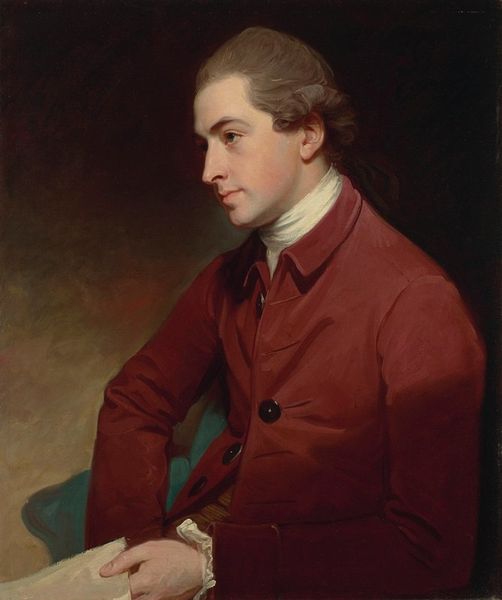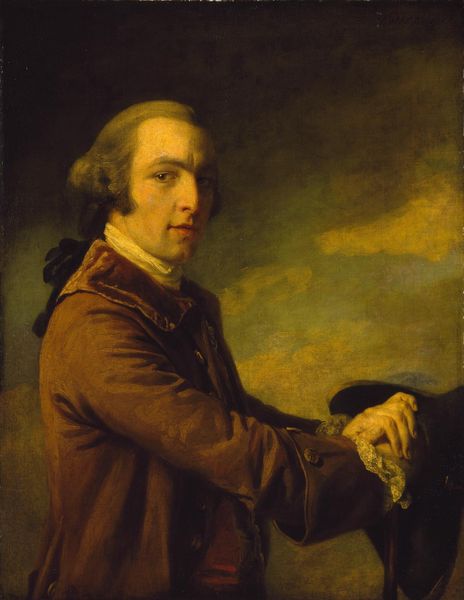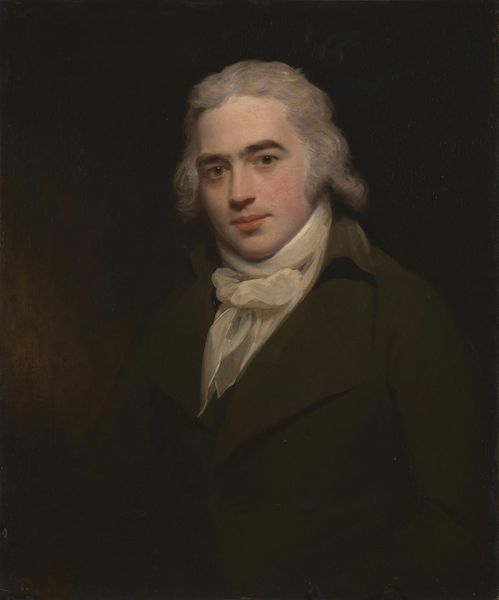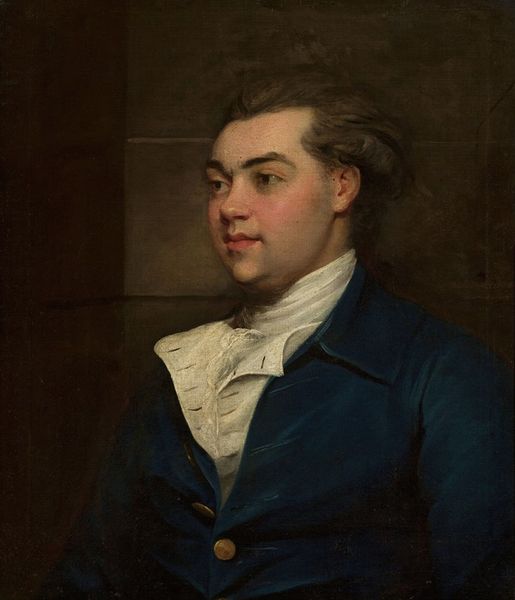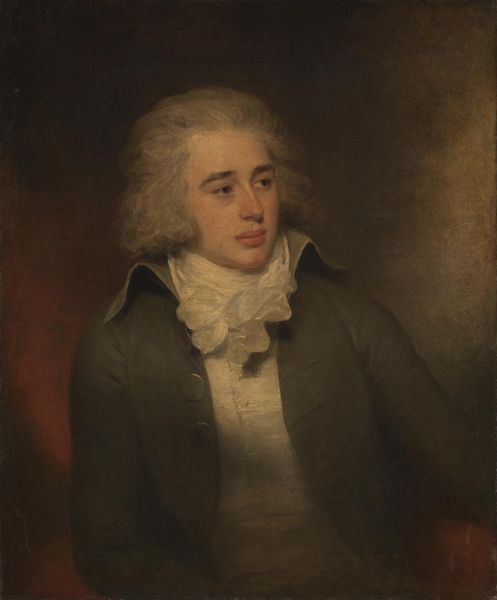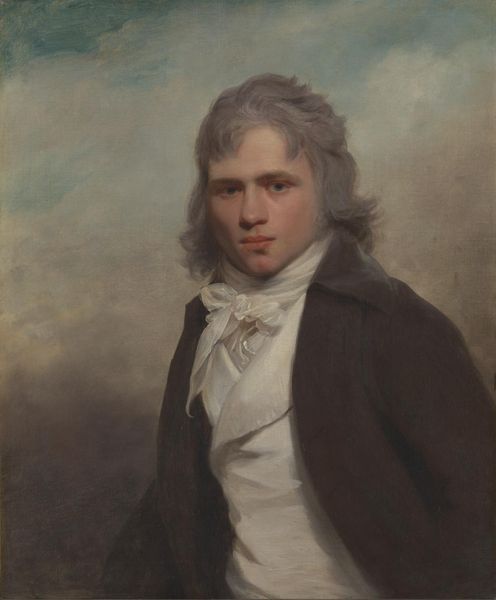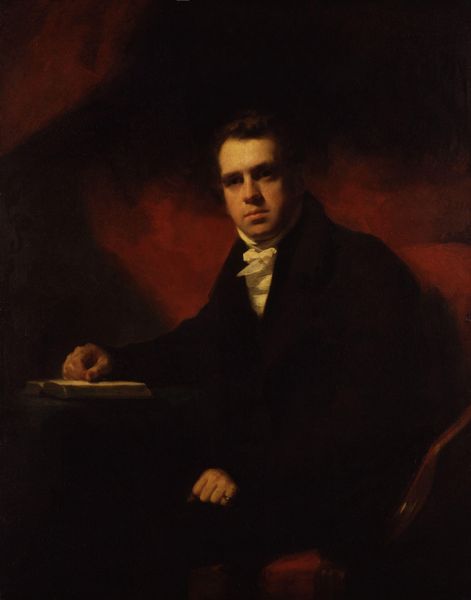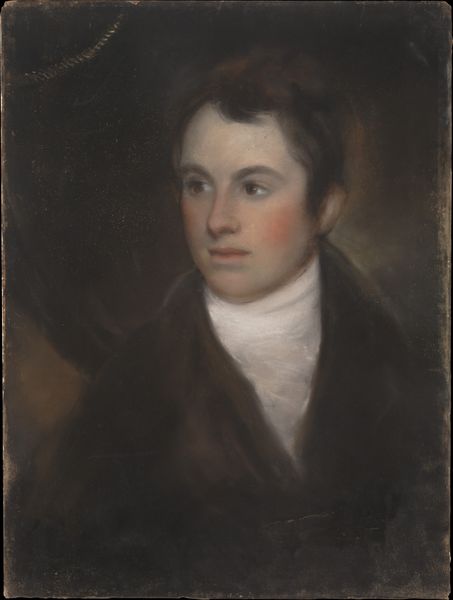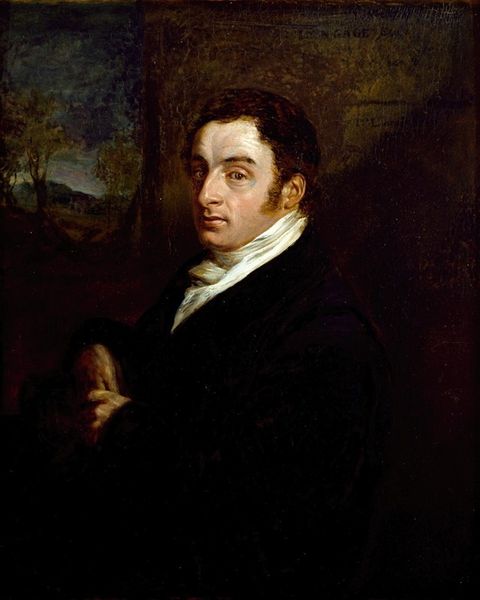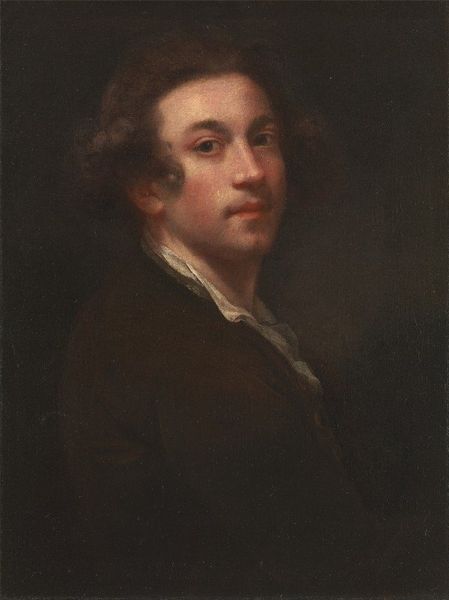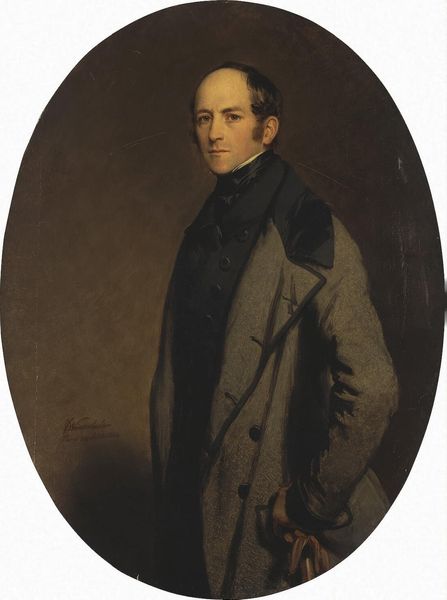
Dimensions: support: 787 x 641 mm
Copyright: CC-BY-NC-ND 4.0 DEED, Photo: Tate
Editor: Here we have Sir Francis Chantrey’s “Self-Portrait”. I’m immediately drawn to the materiality of the paint and the visible brushstrokes. What can you tell me about the process and the context? Curator: Chantrey’s focus here seems to be on depicting himself as a working artist. Note the prominent display of his tools: the drawing, the paper, the hand in the act. It emphasizes artistic labor, doesn’t it? How does this challenge our assumptions about high art? Editor: It makes me consider the craft involved. I hadn’t thought of it that way before! Curator: Exactly. And consider the social implications. Who was Chantrey making art for, and how did his self-representation affect his market value, his social standing? Editor: This has really opened my eyes to a different perspective on portraiture. Thank you. Curator: Indeed, thinking about the artist's labor changes how we understand the value of the artwork itself.
Comments
tatebritain 8 months ago
⋮
http://www.tate.org.uk/art/artworks/chantrey-self-portrait-n01591
Join the conversation
Join millions of artists and users on Artera today and experience the ultimate creative platform.
tatebritain 8 months ago
⋮
Francis Leggatt Chantrey depicts himself leaning over his papers, perhaps working out a design. Born to a farmer and carpenter, he became one of the leading sculptors of portrait busts, public monuments and memorials in the early 19th century. His work was popular among a wealthy clientele including royalty, artists, military figures, scientists and industrialists. Chantrey invested his earnings in the growing transport industry and, on his death, left a grant for purchasing artworks for the nation. The Chantrey Bequest still exists today and over 500 artworks have been purchased with it to date. Gallery label, January 2025
